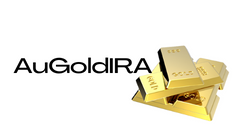In the intricate dance of global finance, few metrics are as telling as the M2 money supply—a measure of global liquidity. Currently sitting at a staggering $97 trillion and climbing, this figure encapsulates the vast flow of cash, deposits, and near-money circulating across the global economy. For Bitcoin investors, this metric is far more than an academic curiosity; it’s a compass guiding market sentiment and price trends.
Understanding Global Liquidity
Global liquidity, often equated with M2 money supply, represents the total volume of currency and near-money available in the financial system. This includes physical cash, checking and savings deposits, money market accounts, retail mutual funds, and short-term time deposits under $100,000. Importantly, M2 reflects not just static wealth but the fluid potential for spending and investing.
The Role of Central Banks in Driving Liquidity
Global liquidity isn’t monolithic. It’s the aggregate result of monetary policies from the world’s most influential central banks:
- USA: Federal Reserve
- China: People’s Bank of China
- EU: European Central Bank
- UK: Bank of England
- Japan: Bank of Japan
- Canada: Bank of Canada
- Russia: Bank of Russia
- Australia: Reserve Bank of Australia
When these central banks lower interest rates or implement quantitative easing (QE) measures, such as purchasing government bonds and securities, they effectively inject fresh liquidity into the global financial system. As liquidity expands, it opens the door for increased spending and investment in risk assets, including Bitcoin.
Why Global Liquidity Matters for Investors
For strategic investors, tracking global liquidity is akin to weather forecasting for the financial markets. Historically, Bitcoin bull markets have coincided with periods of rapid global liquidity expansion. The logic is straightforward: when central banks flood the system with cash, investors are emboldened to seek higher-yielding opportunities in safe-haven assets like Bitcoin.
Bitcoin’s appeal as a non-correlated, deflationary asset makes it uniquely positioned in this environment. Unlike fiat currencies, which central banks can create in unlimited quantities, Bitcoin operates on a fixed monetary schedule capped at 21 million coins. This scarcity is a direct contrast to the seemingly limitless expansion of M2, reinforcing Bitcoin’s narrative as "digital gold."
The Significance of the $97 Trillion Marker
The $97 trillion global M2 supply underscores the relentless expansion of fiat liquidity. While this might seem like an abstract figure, its implications are very tangible for Bitcoin investors. Here’s why:
- Liquidity-Driven Price Momentum: Increased liquidity has historically aligned with Bitcoin’s most explosive growth phases. Investors who monitor these trends gain a crucial edge in timing their market entries.
- Hedge Against Inflation: As central banks expand liquidity to manage economic downturns, the purchasing power of fiat currencies erodes. Bitcoin’s fixed supply serves as a hedge against this debasement.
- Institutional Adoption: As professional and institutional investors increasingly integrate Bitcoin into portfolios, monitoring global liquidity becomes essential for aligning strategies with macroeconomic conditions.
The Future of Bitcoin and Global Liquidity
Bitcoin’s relationship with global liquidity isn’t just a trend; it’s a testament to its maturation as a financial asset. For those who view Bitcoin as an alternative to traditional financial systems, the current $97 trillion liquidity landscape presents a compelling backdrop.
As central banks continue to grapple with economic uncertainties, Bitcoin remains a beacon for investors seeking transparency, predictability, and security in an unpredictable world. The rising tide of global liquidity isn’t just a narrative; it’s an invitation to reevaluate Bitcoin’s role in your investment strategy.
Now is the time to harness the power of data and foresight. Monitor liquidity. Watch Bitcoin. Invest strategically.
For ongoing access to live data, advanced analytics, and exclusive content, visit BitcoinMagazinePro.com.
Disclaimer: This article is intended for informational purposes only and does not constitute financial advice. Readers are encouraged to conduct thorough independent research before making investment decisions.
Frequently Asked Questions
How to Open a Precious Metal IRA?
It is important to decide if you would like an Individual Retirement Account (IRA). To open the account, complete Form 8606. You will then need to complete Form 5204 in order to determine which type IRA you are eligible. This form should be filled within 60 calendar days of opening the account. Once this is done, you can start investing. You may also choose to contribute directly from your paycheck using payroll deduction.
If you opt for a Roth IRA, you must complete Form 8903. Otherwise, the process will be identical to an ordinary IRA.
To qualify for a precious-metals IRA, you'll need to meet some requirements. The IRS stipulates that you must have earned income and be at least 18-years old. For any tax year, your earnings must not exceed $110,000 ($220,000 for married filing jointly). Additionally, you must make regular contributions. These rules are applicable whether you contribute through your employer or directly from the paychecks.
You can use a precious metals IRA to invest in gold, silver, palladium, platinum, rhodium, or even platinum. However, physical bullion will not be available for purchase. This means that you will not be allowed to trade shares or bonds.
To invest directly in precious metals companies, you can also use precious metals IRA. Some IRA providers offer this option.
However, there are two significant drawbacks to investing in precious metals via an IRA. First, they aren't as liquid than stocks and bonds. This makes them harder to sell when needed. They don't yield dividends like bonds and stocks. Also, they don't generate dividends like stocks and bonds. You will eventually lose money rather than make it.
What are the benefits of having a gold IRA?
You can save money on retirement by putting your money into an Individual Retirement Account. It is tax-deferred until it's withdrawn. You have complete control over how much you take out each year. There are many types of IRAs. Some are better suited for people who want to save for college expenses. Others are designed for investors looking for higher returns. Roth IRAs let individuals contribute after age 591/2 and pay tax on any earnings at retirement. The earnings earned after they withdraw the funds aren't subject to any tax. This account is a good option if you plan to retire early.
Because it allows you money to be invested in multiple asset classes, a ‘gold IRA' is similar to any other IRAs. Unlike a regular IRA where you pay taxes on gains, a gold IRA doesn't require you to worry about taxation while you wait to get them. This makes gold IRA accounts a great choice for those who want their money to be invested, not spent.
Another advantage to owning gold via an IRA is the ease of automatic withdraws. It means that you don’t have to remember to make deposits every month. You could also set up direct debits to never miss a payment.
Finally, the gold investment is among the most reliable. Because it isn’t tied to any specific country, gold’s value tends to stay stable. Even during economic turmoil the gold price tends to remain fairly stable. Gold is a good option for protecting your savings from inflation.
What proportion of your portfolio should you have in precious metals
First, let's define precious metals to answer the question. Precious metals have elements with an extremely high worth relative to other commodity. This makes them very valuable in terms of trading and investment. Gold is by far the most common precious metal traded today.
However, many other types of precious metals exist, including silver and platinum. The price volatility of gold can be unpredictable, but it is generally stable during periods of economic turmoil. It also remains relatively unaffected by inflation and deflation.
In general, prices for precious metals tend increase with the overall marketplace. However, the prices of precious metals do not always move in sync with one another. When the economy is in trouble, for example, gold prices tend to rise while other precious metals fall. This is because investors expect lower interest rates, making bonds less attractive investments.
In contrast, when the economy is strong, the opposite effect occurs. Investors want safe assets such Treasury Bonds and are less inclined to demand precious metals. Because they are rare, they become more pricey and lose value.
To maximize your profits when investing in precious metals, diversify across different precious metals. Because precious metals prices are subject to fluctuations, it is best to invest across multiple precious metal types, rather than focusing on one.
Statistics
- This is a 15% margin that has shown no stable direction of growth but fluctuates seemingly at random. (smartasset.com)
- Instead, the economy improved, stocks rebounded, and gold plunged, losing 28 percent of its value in 2013. (aarp.org)
- Indeed, several financial advisers interviewed for this article suggest you invest 5 to 15 percent of your portfolio in gold, just in case. (aarp.org)
- If you accidentally make an improper transaction, the IRS will disallow it and count it as a withdrawal, so you would owe income tax on the item's value and, if you are younger than 59 ½, an additional 10% early withdrawal penalty. (forbes.com)
- If you take distributions before hitting 59.5, you'll owe a 10% penalty on the amount withdrawn. (lendedu.com)
External Links
finance.yahoo.com
forbes.com
- Gold IRA – Add Sparkle to Your Retirement Nest Egg
- Understanding China's Evergrande Crisis – Forbes Advisor
irs.gov
law.cornell.edu
- 7 U.S. Code SS7 – Designation boards of trade as contract market authorities
- 26 U.S. Code SS 408 – Individual retirement accounts
How To
How to hold physical gold in an IRA
The easiest way to invest is to buy shares in companies that make gold. This method is not without risks. There's no guarantee these companies will survive. There is always the chance of them losing their money due to fluctuations of the gold price.
You can also buy gold directly. You will need to either open an online or bank account or simply buy gold from a reliable seller. The advantages of this option include the ease of access (you don't need to deal with stock exchanges) and the ability to make purchases when prices are low. It is easier to view how much gold has been stored. You'll get a receipt showing exactly what you paid, so you'll know if any taxes were missed. You are also less likely to be robbed than investing in stocks.
There are also some drawbacks. Bank interest rates and investment funds won't help you. You won't have the ability to diversify your holdings; you will be stuck with what you purchased. Finally, tax man may want to ask where you put your gold.
Visit BullionVault.com to find out more about gold buying in an IRA.
—————————————————————————————————————————————————————————————-
Based on [POSTTITLE]
by [POSTAUTHOR]


















